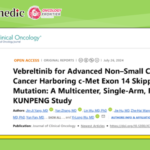
A large population-based cohort study led by Dr. Mollie E. Barnard from the Huntsman Cancer Institute at the University of Utah has found that women with endometriosis have an overall higher risk of ovarian cancer, with the risk being significantly elevated in those with severe types of endometriosis. This study, published in the journal of the American Medical Association [1], suggests that these women may benefit from counseling on ovarian cancer risk and prevention, as well as potential ovarian cancer screening.While the absolute increase in cases is relatively small, women with endometriosis have more than a fourfold increased risk of developing any type of ovarian cancer. Those with more severe forms, such as ovarian endometriosis or deep infiltrating endometriosis, face nearly a tenfold higher risk of developing ovarian cancer. Moreover, women with severe endometriosis are 19 times more likely to develop type 1 (slow-growing) ovarian cancer and nearly three times more likely to develop type 2 (more aggressive) ovarian cancer. “Given the rarity of ovarian cancer, the absolute increase in risk is relatively small, resulting in only 10 to 20 additional cases per 10,000 women,” said corresponding author Dr. Karen C. Schliep. “However, women with endometriosis, particularly those with more severe forms, may be an important population for ovarian cancer screening and prevention research.”
Previous studies have shown an association between endometriosis and ovarian cancer. A 2021 systematic review and meta-analysis [2] found that endometriosis nearly doubled the risk of ovarian cancer, with the association varying by ovarian cancer subtype. Few studies have been large enough to assess the association between endometriosis type and ovarian cancer incidence, making this study’s findings particularly important for addressing this underexplored issue.
Study Details
Researchers used electronic health records from Utah from 1992 to 2019, comparing 78,893 women with endometriosis to women without the condition in a 1:5 ratio. Cases were classified into superficial endometriosis, ovarian endometriosis, deep infiltrating endometriosis, or other types, with endometriosis type matched to ovarian cancer histology. The average age at first diagnosis of endometriosis was 36 years, and the average follow-up period was 12 years.
Compared to the control group, women with endometriosis were more likely to be nulliparous (31% vs. 24%) and had a higher likelihood of undergoing hysterectomy during follow-up (39% vs. 6%).
- The cohort reported 596 cases of ovarian cancer. Compared to women without endometriosis, those with the condition were 4.2 times more likely to develop ovarian cancer (95% CI: 3.59-4.91), 7.48 times more likely to develop type 1 ovarian cancer (95% CI: 5.80-9.65), and 2.70 times more likely to develop type 2 ovarian cancer (95% CI: 2.09-3.49).
- The degree of association varied by endometriosis subtype. Women diagnosed with deep infiltrating endometriosis and/or ovarian endometrioma had a 9.66-fold higher risk of ovarian cancer compared to those without endometriosis (95% CI: 7.77-12.00).
- Women with more severe forms of endometriosis were 19 times more likely to develop type 1 ovarian cancer, including endometrioid, clear cell, mucinous, and low-grade serous carcinomas, with the highest risk found in the more malignant subtypes such as clear cell carcinoma and endometrioid carcinoma (adjusted hazard ratios of 11.15 and 7.96, respectively).
Dr. Schliep emphasized that while women with endometriosis should be vigilant, they should not be overly concerned about ovarian cancer risk, as the likelihood remains low. Patients can reduce their cancer risk by maintaining a healthy lifestyle, including a balanced diet, limiting alcohol consumption, exercising regularly, maintaining a healthy weight, and quitting smoking. She added, “We need more research to explore how different types of endometriosis affect the risk of different types of ovarian cancer. For women with severe endometriosis, whether or not they have other significant conditions, these findings can help refine risk factors for ovarian cancer screening and prevention, such as BRCA1/2 mutations.”
Study Commentary
An accompanying editorial [3] described the study as “eloquent,” highlighting its unique contribution in examining the association between endometriosis subtypes and the overall risk of ovarian cancer, as well as the risk of epithelial ovarian cancer subtypes.
However, Michael T. McHale from the Moores Cancer Center at the University of California, San Diego, expressed concerns about the study’s methodology. He pointed out that although the researchers tried to control for key confounding factors, the dataset did not provide detailed information about the medical management of endometriosis, such as the use of oral contraceptives or gonadotropin-releasing hormone agonists. Additionally, some women in the control group may have had undiagnosed endometriosis.
While the absolute increase in ovarian cancer cases is small, McHale believes the elevated risk associated with endometriosis is significant enough to recommend that women with endometriosis who have completed childbearing or have alternative reproductive options consider “definitive surgery.”
Sources
Marina Kvaskoff. Severe Types of Endometriosis Boosts Ovarian Cancer Risk – Medscape – July 18, 2024.
References:
- Barnard Mollie E, et al. Endometriosis Typology and Ovarian Cancer Risk. JAMA. Published online July 17, 2024. doi:10.1001/jama.2024.9210.
- Kvaskoff Marina, et al. Endometriosis and cancer: a systematic review and meta-analysis. Human Reproduction Update, Vol.27, No.2, pp. 393–420, 2021.
- McHale Michael T, et al. New Insights in Endometriosis Subtypes and Ovarian Cancer Risk. JAMA. Published online July 17, 2024. doi:10.1001/jama.2024.12357.


